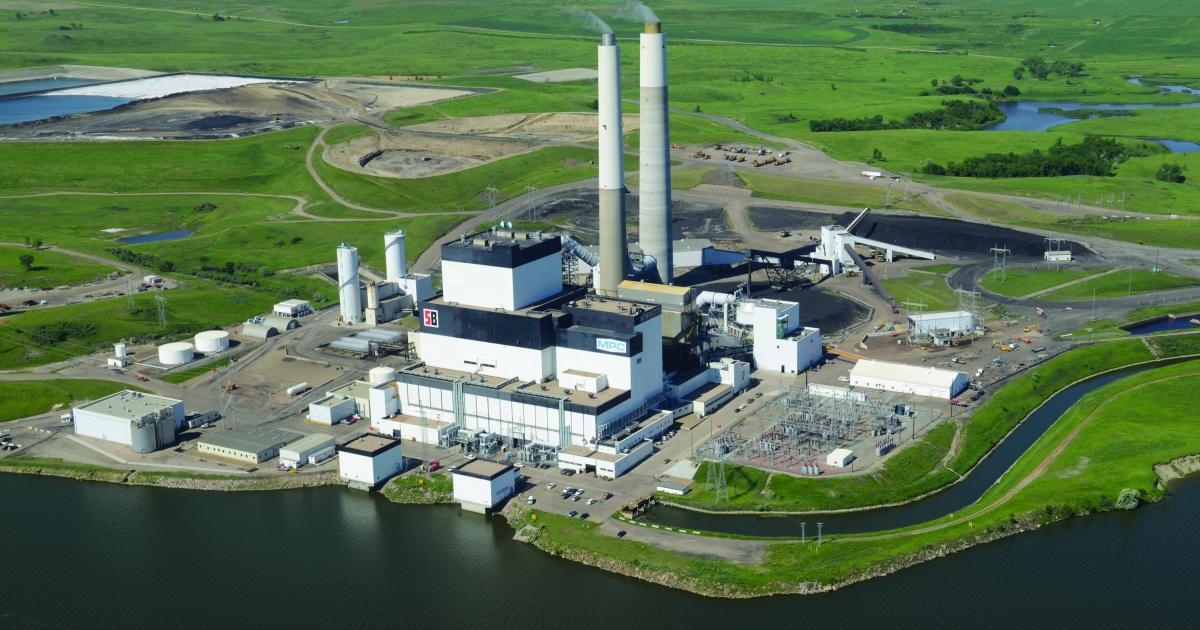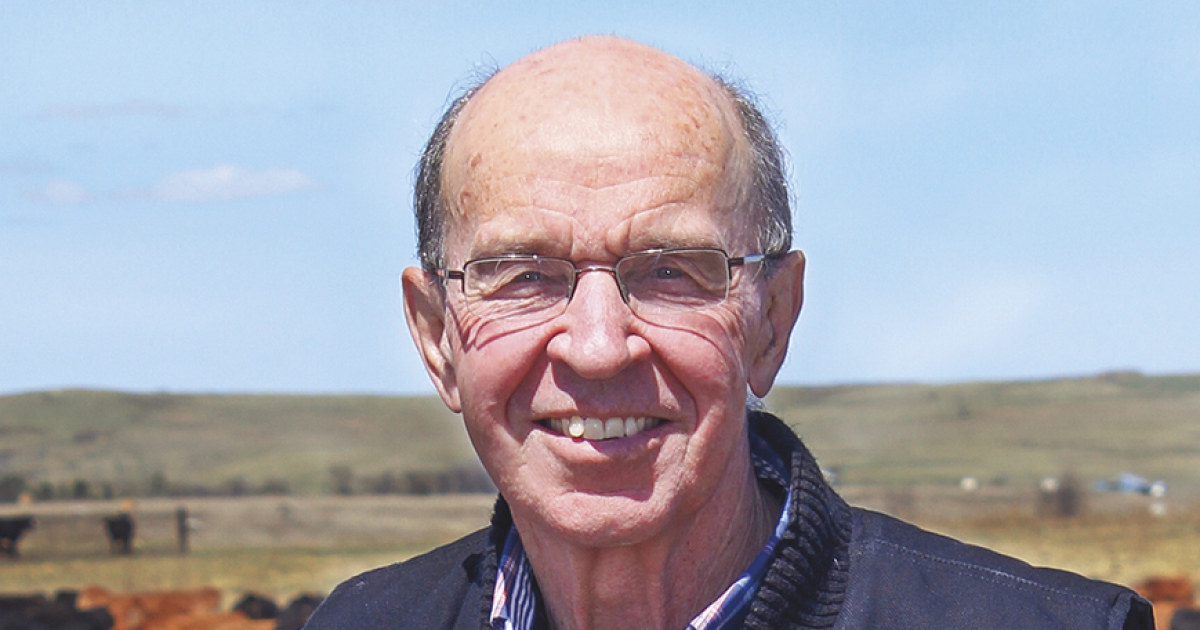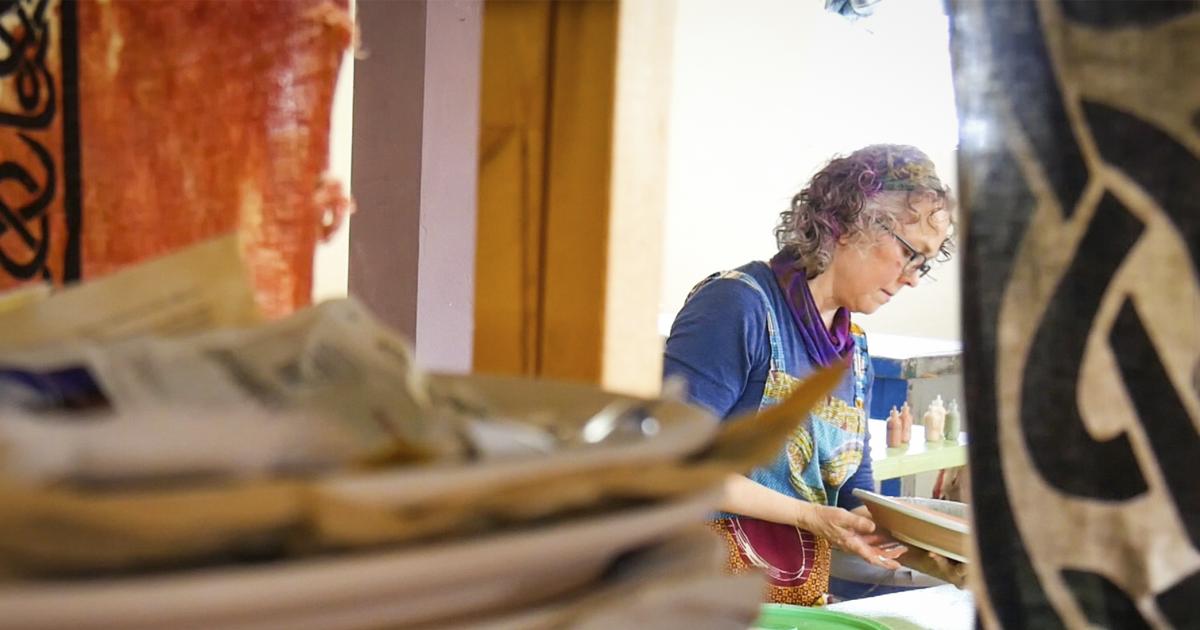Power generation using abundant lignite coal resources has long been the cornerstone of affordable electricity for the electric cooperatives of North Dakota, and neighboring states.
The 60-year history of lignite coal-based power generation in North Dakota has been marked by steady, continuing removal of regulated atmospheric emissions, in compliance with mounting federal and state regulation.
Retrofitting Minnkota Power Cooperative's Milton R. Young Station with new carbon capture technology is the aim of Project Tundra.
Carbon dioxide (CO2) is the latest regulatory target for removal from the atmospheric emissions resulting from lignite coal combustion.
Minnkota Power Cooperative, Grand Forks, co-owner/operator of the Milton R. Young Station, near Center, is currently proceeding with a significant project evaluating how CO2 can be captured during that plant’s lignite coal electricity generation process.
“Lignite coal remains a primary workhorse for our system,” says Stacey Dahl, senior manager of external affairs for Minnkota. She says the cooperative has integrated wind generation into its portfolio in recent years, and still gets about 10 percent of its power from hydroelectricity, but the co-op places a high priority on the role lignite coal plays.
“We still have about 55 percent of our system capacity that comes from coal, and that percentage is higher when you look at actual energy delivered,” Dahl says. “So it remains a very cost-effective resource for our system.”
Minnkota is a wholesale power generation and transmission resource for electric cooperatives in eastern North Dakota, and for a group of electric cooperatives in Minnesota. The power supply cooperative also collaborates on power supply for municipal power systems.
Dahl says Minnkota efforts and investments to secure affordable means of removing CO2 from its power generation activity are a continuation of its history of compliance with federal clean air regulation. Compliance has led to the successful removal of sulfur dioxide, nitrogen oxide and mercury from combustion emissions. She indicates exploring CO2 capture is next.
“We want to find technological solutions where we can cost effectively manage our carbon emissions and in exchange provide some more regulatory certainty for our membership into the future,” Dahl says
Project Tundra is the research and development activity through which Minnkota is evaluating carbon capture technology for retrofitting the Young Station. With Project Tundra, Minnkota – partnering with Eagle Energy Partners, BNI Energy and the Energy & Environmental Research Center (EERC) – is exploring a retrofit for Unit 2 of the Young Station, featuring technology that would capture up to 90 percent of its CO2 emissions. The CO2 would then be used for enhanced oil recovery or permanent geologic storage. Project Tundra work is patterned after comparable work done at the Petra Nova project, a carbon capture and storage technology currently being used at a coal power plant in Texas.
Dahl indicates, in addition to supporting testing and evaluation of the chemical process of capturing carbon, Minnkota works on other complementary paths which are key to the success of the project. These include: communication with the oil exploration sector, identifying potential sale and use of CO2 in oil exploration; exploration of geologic storage/disposal of CO2; sustaining state and federal support for costs of proceeding with the project; and the development of the business structure which will support the numerous and complex transactions that are part of Project Tundra.
The EERC in Grand Forks is currently conducting Project Carbon as support for the Project Tundra evaluation.
Jason Laumb, EERC principal engineer for coal utilization, is coordinating Project Carbon. He indicates years of developing successful tools for North Dakota power generators to use to eliminate regulated emissions from power plants has set the stage for the current work being done to explore removal of CO2. He adds EERC also has extensive experience removing CO2 from industrial natural gas processing settings.
“The next big thing that's on the docket is CO2 capture from power stations and the focus we have right now is really on the North Dakota power plants being able to cost effectively capture CO2 from their streams,” Laumb says.
“The technology that we're looking at – that is the most ripe right now – is a technology that uses amines,” Laumb says. He says amines are organic molecules that react with CO2 in a way that can lead to its segregation and removal from combustion emissions. Laumb adds the Project Carbon team is working to convert this basic chemical reaction to a large industrial application technology that would meet the challenge of removing millions of tons of CO2 annually from the Young Station emissions. Project Carbon research is intended to support the overall technological and economic evaluation which Minnkota is doing with Project Tundra.
Laumb anticipates that initial research findings for Project Carbon will be completed later this year.
Minnkota estimates that the large retrofit solution with the associated enhanced oil recovery infrastructure such as that being undertaken with Project Tundra is estimated to have a total cost of $1.3 billion.
Dahl says the Minnkota board, membership and management recognize the importance of continued use of lignite coal as a key to future affordable electricity for consumer-members. She says abundant, reliable, affordable sources for power are the challenge they are trying to meet.
“This is an opportunity for the board and membership to evaluate potential CO2 capture solutions, as a way of meeting one of our biggest challenges of the future,” Dahl says. She adds a key part of the challenge is finding a CO2 capture solution that is economically feasible. “At the end of the day, it has to be a solution that doesn’t significantly impact rates to our membership.”
“We need to continue to look at new technologies and new ways to use lignite coal right now,” Laumb says. “At our current usage rates, we have an 800-year supply of lignite coal in North Dakota. Why not use that resource? We have it, and we have the brains to develop new technologies to use it.”
Kent Brick is editor of North Dakota Living. He can be reached at kbrick@ndarec.com.










